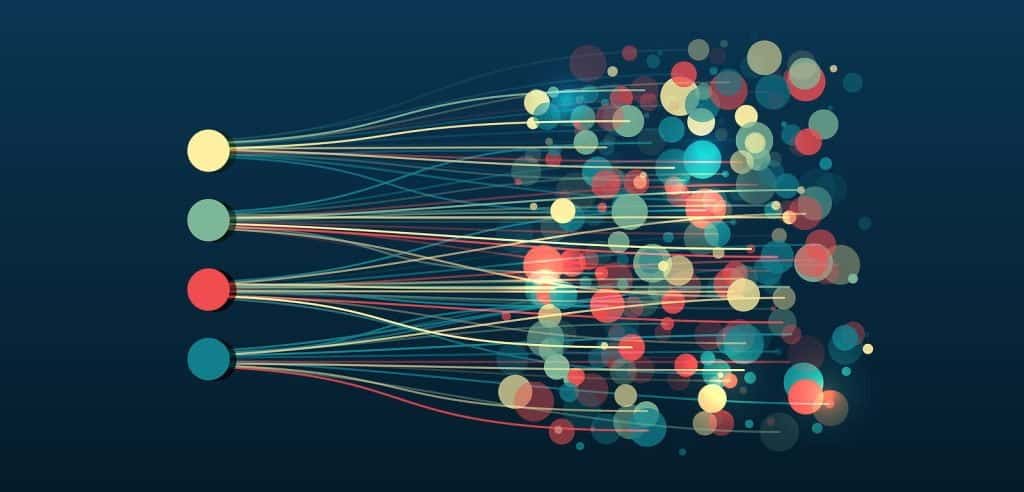In today’s data-driven world, the importance of data visualization in data analytics cannot be overstated. This essential tool has become indispensable for getting meaningful insights from large amounts of information.
Table of Contents
ToggleCompanies that wish to make intelligent decisions and promote their development must be able to interpret extensive data into manageable, easily interpretable visuals. In this article, we’ll explore the role of data visualization in data analytics and why it’s a critical tool for enterprise IT teams.
What is data visualization?
Data visualization is a game-changing asset for companies of all sizes. It allows them to quickly and effectively utilize large datasets through graphical representations such as charts, graphs, and maps.
What is the importance of data visualization for modern businesses?
Data visualization has become essential to any organizational data analytics approach by providing businesses with the vital insights they need in an easy-to-understand format. It helps uncover patterns in the data that may have been previously unnoticed.
This can help teams move faster by taking advantage of opportunities or mitigating risks, enabling them to make more informed decisions about their business operations.
Data visualization also makes it easier for organizations to communicate their findings with stakeholders by displaying data visually and quickly, understanding what’s happening within the organization, and taking appropriate actions.
How does the role of data visualization tie into data analytics?
As AI and machine learning become increasingly ubiquitous, data visualization is more necessary than ever. With its help, teams can comprehend the performance of their models as well as pinpoint areas that need optimization. It is becoming a vital component of any successful data analytics strategy, as businesses need to leverage this powerful tool to stay competitive in an ever-evolving marketplace.
What is the importance of data visualization?
Businesses can maximize their analytics capabilities by deploying the appropriate data visualization strategies to drive meaningful progress and expansion. Let’s look into the benefits and importance of data visualization in data analytics.
1. It makes complex data easier to understand.
Data analytics often involves working with large amounts of complex data, and extracting insights without proper tools can be challenging. This is where data visualization comes in.
Converting data into visually appealing and intuitive representations makes it much easier to identify patterns, trends, and relationships within the data—the more straightforward the process of understanding the data, the faster the decision-making process.
2. It helps to identify trends and patterns.
Data visualization tools can represent data in various ways, such as graphs, charts, and maps, making it easier to identify correlations and trends that may be difficult to spot in raw data sets. Businesses can make more informed decisions by identifying new opportunities, detecting potential problems, and monitoring process performance.
3. It facilitates data-driven decision making.
Data visualization plays a crucial role in data-driven decision-making. By presenting data visually appealing and intuitively, it becomes easier for businesses to understand the information and make informed decisions based on the data.
For example, suppose a business wants to determine the best geographic location for a new store. In that case, it can use data visualization to analyze sales data and population demographics, allowing it to decide where to open its store(s).
4. It supports collaboration and communication
Visualized data can allow teams to quickly and effectively convey ideas, insights, and findings to one another, leading to better collaboration and communication within the organization.
This can be especially beneficial for large enterprises, where different departments often work with many data sets and need faster collaboration to achieve common goals.
Big data and data visualization
The increased popularity of big data and data analysis projects has made visualization more crucial than ever. Companies increasingly use machine learning to gather massive amounts of data that can be difficult and slow to sort through, comprehend, and explain. Visualization offers a means to speed this up and present information to business owners and stakeholders in ways they can understand.
Big data visualization requires robust computer systems to collect raw data, process it and turn it into graphical representations that humans can use to draw insights quickly. Big data visualization often goes beyond the typical techniques used in standard visualization, such as pie charts, histograms, and corporate graphs. Instead, it uses more complex representations like heat maps and fever charts.
A specialist must be hired to get the most out of big data visualization tools. This specialist must be able to identify the best data sets and visualization styles to guarantee organizations are optimizing the use of their data.
Big data visualization projects often require involvement from IT and management since the visualization of big data requires powerful computer hardware, efficient storage systems, and even a move to the cloud.
The insights provided by big data visualization will only be as accurate as the information being visualized. Therefore, it is essential to have people and processes in place to govern and control the quality of corporate data, metadata, and data sources.
Examples of data visualization
In the early days of visualization, the most common technique was using a Microsoft Excel spreadsheet to transform the information into a table, bar graph, or pie chart. While these methods are still commonly used, more intricate techniques are now available, including the following:
- infographics
- bubble clouds
- bullet graphs
- heat maps
- fever charts
- time-series charts
Some other famous techniques are as follows:
1. Line charts
This is one of the most basic and standard techniques used. Line charts display how variables can change over time.
2. Area charts
This visualization method is a variation of a line chart; it displays multiple values in a time series – or a sequence of data collected at consecutive, equally spaced points in time.
3. Scatter plots
This technique displays the relationship between two variables. A scatter plot forms the x- and y-axis with dots representing data points.
4. Treemaps
Treemaps are a perfect way of presenting hierarchical data in a nested formation. The size of each rectangle representing individual categories should be proportional to its total share; when multiple classifications exist, with an end goal of comparing various components of the whole, using a Treemap will give you the best results!
5. Population pyramids
This technique uses a stacked bar graph to display the complex social narrative of a population. It is best used when trying to show the distribution of a population.
Use cases of data visualization
The applications of this vital tool are broad and diverse, spanning multiple industries and fields. From marketing and politics to healthcare and finance, data visualization is used to help decision-makers understand and interpret complex data sets, leading to informed and impactful decisions. Here are a few common use cases:
1. Sales and Marketing
Visualization helps marketing teams understand the impact of their efforts on web traffic and revenue. By visualizing trends over time, teams can quickly see the effect of their campaigns and make informed decisions.
2. Politics
Political data is often visualized through geographic maps, showing voting patterns by state or district.
3. Healthcare
Choropleth maps are commonly used in healthcare to display the distribution of essential health variables across geographical regions, such as mortality rates.
4. Science
Scientific visualization, also known as SciVis, helps researchers gain deeper insights into their data, leading to discoveries.
5. Finance
Finance professionals use candlestick charts to track their investment performance and detect market trends.
6. Logistics
Shipping companies use visualization tools to optimize their shipping routes.
7. Data Science and Research
Data scientists and researchers use visualizations to understand data sets and identify patterns and trends. These visualizations are often built using open-source programming languages or proprietary tools for complex data analysis.
Conclusion
Visualization is essential in data analytics as it transforms complex data into a visual format, making it easier to understand and identify patterns and trends, leading to informed decisions.




